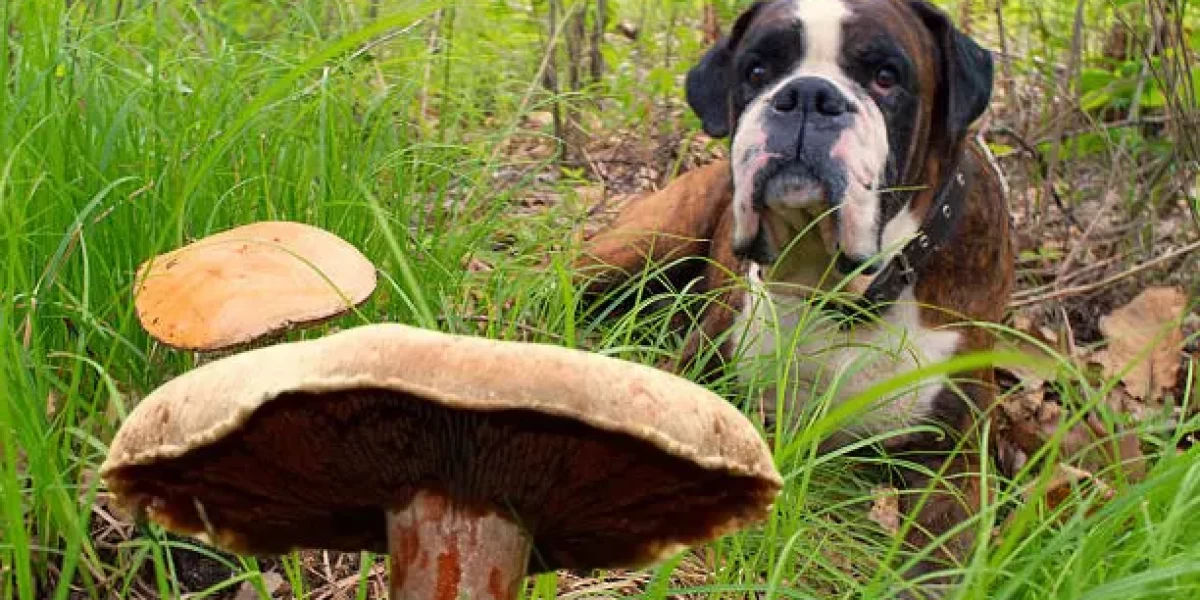Zombie Viruses: The world is still reeling from the devastating effects of the COVID-19 pandemic, which has claimed millions of lives and disrupted the global economy and society. However, scientists warn that another pandemic could strike the world from an unexpected source: the melting Arctic permafrost. This frozen layer of soil and organic matter, which covers about a quarter of the northern hemisphere, could harbor ancient viruses that have been dormant for thousands or even millions of years. These viruses, dubbed “zombie viruses” or “Methuselah microbes”, could potentially infect humans and animals, and cause new and unknown diseases. In this article, we will explore the characteristics, origins, and implications of these Arctic zombie viruses, and why they pose a significant and emerging threat to global health and security.
Characteristics of Arctic Environments
The Arctic is a vast and diverse region that encompasses the northernmost parts of North America, Europe, and Asia, as well as the Arctic Ocean and its surrounding seas and islands. The Arctic is home to about four million people, who belong to various indigenous and non-indigenous cultures and communities. The Arctic is also rich in natural resources, such as oil, gas, minerals, fish, and wildlife, and plays a key role in regulating the global climate and environment.
One of the defining features of the Arctic is the permafrost, which is the soil or underwater sediment that has been frozen for at least two consecutive years. Permafrost can vary in thickness, from a few centimeters to several meters, and can extend up to 1,500 meters below the surface. Permafrost can also contain large amounts of organic matter, such as plants, animals, and microbes, that have been preserved by the cold and dark conditions. Permafrost can store up to twice as much carbon as the atmosphere and can act as a natural freezer that keeps biological material intact for long periods of time.
Historical Perspective
The idea that permafrost could contain ancient viruses that could infect humans and animals is not new. In fact, there have been several instances in history where viruses have been recovered or revived from permafrost or other frozen environments, and have caused outbreaks or epidemics. Some of the notable examples are:
- In 1918, the Spanish flu pandemic killed about 50 million people worldwide and was caused by an H1N1 influenza virus that originated from birds. In 1997, scientists extracted and sequenced the virus from the lungs of a victim who was buried in the Alaskan permafrost. In 2005, scientists recreated and tested the virus in a laboratory, and found that it was highly lethal and contagious.
- In 1979, an anthrax outbreak killed 64 people and infected more than 100 others in the Sverdlovsk region of Russia. The outbreak was caused by a leak of anthrax spores from a military facility that was testing biological weapons. The spores were derived from a strain of anthrax that was isolated from a reindeer that died in 1941 and was buried in the Siberian permafrost.
- In 2016, a 12-year-old boy died and 20 others were hospitalized after contracting anthrax in the Yamal Peninsula of Russia. The outbreak was caused by the thawing of a reindeer carcass that was infected with anthrax and buried in the permafrost for 75 years. The carcass was exposed by an unusually warm summer that melted the permafrost and released the spores into the air and water.
These cases illustrate the potential dangers of viruses that are buried in the permafrost and can be released by natural or human-induced factors. They also highlight the importance of monitoring and containing the outbreaks, and of developing and deploying effective vaccines and treatments.
Potential Origins of Arctic Zombie Viruses
The origin and nature of the viruses that could be lurking in the permafrost are still unknown and uncertain. However, there are two main hypotheses that have been proposed by scientists: natural evolution and adaptation, and ancient viruses released due to climate change.
Natural evolution and adaptation
One hypothesis is that the viruses that could be found in the permafrost are the result of natural evolution and adaptation of existing viruses that have been circulating in the Arctic environment for a long time. These viruses could have adapted to the cold and harsh conditions of the permafrost and could have developed unique and novel features that make them different from their counterparts in other regions. These viruses could also have co-evolved with their hosts, such as animals, plants, and microbes, and could have established a balance or symbiosis with them. These viruses could pose a threat to humans and animals if they are exposed to new and unfamiliar hosts, and if they have the ability to cross species barriers and cause infection and disease.
Ancient viruses released due to climate change
Another hypothesis is that the viruses that could be found in the permafrost are ancient viruses that have been frozen and dormant for thousands or even millions of years, and that are being released due to climate change. These viruses could have originated from various sources, such as prehistoric animals, plants, and microbes, or from human civilizations and activities, such as burials, wars, and migrations. These viruses could have been trapped and preserved in the permafrost and could have survived the freezing and thawing cycles without losing their infectivity and virulence. These viruses could pose a threat to humans and animals if they are revived and reactivated by the warming and melting of the permafrost, and if they have the potential to infect and cause disease in modern hosts.
Risks and Challenges
The discovery and emergence of Arctic zombie viruses pose several risks and challenges for the world, as they could potentially spread and cause new and unknown diseases in humans and animals. The risks and challenges include:
Spread of Arctic zombie viruses
One of the main risks of Arctic zombie viruses is their ability to spread and infect new hosts, especially if they are released from the permafrost due to climate change or human activities. The spread of Arctic zombie viruses could occur through various routes, such as:
- Airborne transmission: Some viruses, such as influenza and anthrax, can be carried by air currents and inhaled by humans and animals, causing respiratory infections and diseases.
- Waterborne transmission: Some viruses, such as hepatitis and norovirus, can contaminate water sources and cause gastrointestinal infections and diseases.
- Vector-borne transmission: Some viruses, such as dengue and Zika, can be transmitted by insects or animals that bite or feed on humans and animals, causing systemic infections and diseases.
- Zoonotic transmission: Some viruses, such as rabies and Ebola, can be transmitted from animals to humans through direct or indirect contact, causing neurological or hemorrhagic infections and diseases.
The spread of Arctic zombie viruses could be facilitated by several factors, such as:
- Globalization and mobility: The increased movement and travel of people, goods, and animals across the world could facilitate the introduction and dissemination of Arctic zombie viruses to new regions and populations.
- Climate change and environmental degradation: The rising temperatures and melting ice could increase the exposure and release of Arctic zombie viruses from the permafrost, and also alter the habitats and behaviors of potential hosts and vectors.
- Lack of immunity and surveillance: The lack of natural or acquired immunity against Arctic zombie viruses among humans and animals could increase the susceptibility and severity of infections and diseases, and the lack of adequate surveillance and monitoring systems could delay the detection and response to outbreaks.
Impact on local wildlife and ecosystems
Another risk of Arctic zombie viruses is their impact on the local wildlife and ecosystems, which are already threatened by climate change and human activities. The impact of Arctic zombie viruses could include:
- Loss of biodiversity and ecosystem services: The infection and mortality of wildlife species due to Arctic zombie viruses could reduce the diversity and abundance of flora and fauna, and affect the ecological functions and processes that they provide, such as pollination, predation, and decomposition.
- Disruption of food webs and trophic cascades: The infection and mortality of wildlife species due to Arctic zombie viruses could alter the interactions and balances among different trophic levels, and cause cascading effects on the structure and function of the food webs.
- Emergence of invasive and opportunistic species: The infection and mortality of wildlife species due to Arctic zombie viruses could create vacant niches and opportunities for the invasion and proliferation of non-native or opportunistic species, which could compete with or prey on the native species, and introduce new pathogens or parasites.
Potential for human transmission
A third risk of Arctic zombie viruses is their potential for human transmission, which could cause new and unknown diseases in humans. The potential for human transmission could depend on several factors, such as:
- Viral characteristics: The genetic and molecular features of Arctic zombie viruses, such as their origin, evolution, adaptation, and diversity, could determine their ability to infect and cause disease in humans, and their susceptibility or resistance to existing drugs and vaccines.
- Host factors: The genetic and immunological features of humans, such as their age, sex, ethnicity, and health status, could influence their vulnerability and response to Arctic zombie viruses, and their potential to transmit them to others.
- Environmental factors: The physical and social features of the environment, such as the climate, geography, population density, and sanitation, could affect the exposure and transmission of Arctic zombie viruses among humans, and the availability and accessibility of health care and prevention services.
Scientific Research and Monitoring
The exploration and investigation of Arctic zombie viruses are essential for understanding their origin, nature, and implications, and for developing and implementing effective measures to prevent and control their spread and impact. The scientific research and monitoring of Arctic zombie viruses include:
Current studies on Arctic viruses
Several studies have been conducted or are ongoing on Arctic viruses, using various methods and approaches, such as:
- Isolation and identification: Some studies have isolated and identified Arctic viruses from permafrost samples or from infected hosts, using techniques such as culture, microscopy, or molecular assays, and have characterized their morphology, taxonomy, and phylogeny.
- Sequencing and analysis: Some studies have sequenced and analyzed the genomes of Arctic viruses, using techniques such as PCR, Sanger sequencing, or next-generation sequencing, and have compared and contrasted their genetic features, such as their origin, evolution, diversity, and function.
- Reconstruction and testing: Some studies have reconstructed and tested Arctic viruses, using techniques such as reverse genetics, synthetic biology, or animal models, and have evaluated their infectivity, virulence, and pathogenicity.
Surveillance and monitoring efforts
Several efforts have been initiated or are planned to monitor and surveil Arctic viruses, using various tools and strategies, such as:
- Sampling and testing: Some efforts have collected and tested permafrost samples or biological specimens from potential hosts or vectors, using methods such as drilling, coring, or trapping, and have detected and measured the presence and abundance of Arctic viruses or their markers.
- Mapping and modeling: Some efforts have mapped and modeled the distribution and dynamics of Arctic viruses or their hosts or vectors, using methods such as remote sensing, GIS, or mathematical models, and have predicted and projected their spatial and temporal patterns and trends.
- Reporting and alerting: Some efforts have reported and alerted the occurrence and outbreak of Arctic viruses or their associated diseases, using methods such as online databases, networks, or platforms, and have provided and updated the information and data on Arctic viruses or their hosts or vectors.
Mitigation and Preparedness
The prevention and management of Arctic zombie viruses are crucial for reducing their risks and challenges, and for protecting the health and well-being of humans and animals. The mitigation and preparedness of Arctic zombie viruses involve:
International cooperation and collaboration
One of the key elements of mitigating and preparing for Arctic zombie viruses is the international cooperation and collaboration among various actors and sectors, such as:
- Governments and organizations: The governments and organizations of the Arctic and non-Arctic countries and regions, such as the Arctic Council, the United Nations, the World Health Organization, and the World Wildlife Fund, should coordinate and cooperate on the policies and actions that address the issues and challenges of Arctic zombie viruses, such as climate change, environmental protection, health security, and human rights.
- Scientists and experts: Scientists and experts from different disciplines and fields, such as virology, microbiology, ecology, epidemiology, and public health, should collaborate and communicate on the research and monitoring of Arctic zombie viruses, such as sharing and exchanging the data and information, and developing and implementing the standards and guidelines.
- Communities and stakeholders: The communities and stakeholders of the Arctic and non-Arctic regions, such as the indigenous and local people, the industry and business sectors, the media and civil society, and the general public, should participate and engage in the mitigation and preparedness of Arctic zombie viruses, such as raising and spreading the awareness and knowledge, and providing and receiving the feedback and support.
Development of strategies for virus containment
Another key element of mitigating and preparing for Arctic zombie viruses is the development of strategies for virus containment, which aim to prevent or reduce the exposure and transmission of Arctic zombie viruses among humans and animals, such as:
- Environmental management: The environmental management of Arctic zombie viruses involves the conservation and restoration of the permafrost and the ecosystems that harbor Arctic zombie viruses, and the regulation and reduction of the human activities that disturb or damage the permafrost and the ecosystems, such as mining, drilling, or tourism.
- Infection control: The infection control of Arctic zombie viruses involves the implementation and enforcement of the measures and practices that prevent or reduce the contact and spread of Arctic zombie viruses among humans and animals, such as isolation, quarantine, disinfection, or culling.
- Vaccination and treatment: The vaccination and treatment of Arctic zombie viruses involve the development and delivery of drugs and vaccines that prevent or cure the infections and diseases caused by Arctic zombie viruses in humans and animals, such as antivirals, antibiotics, or immunotherapy.
Preparedness measures for potential outbreaks
A third key element of mitigating and preparing for Arctic zombie viruses is the preparedness measures for potential outbreaks, which aim to detect and respond to the emergence and occurrence of Arctic zombie viruses or their associated diseases in humans and animals, such as:
- Surveillance and diagnosis: The surveillance and diagnosis of Arctic zombie viruses involve the establishment and maintenance of the systems and capacities that monitor and identify the cases and clusters of Arctic zombie viruses or their associated diseases in humans and animals, such as laboratories, clinics, or networks.
- Reporting and notification: The Reporting and notification of Arctic zombie viruses involve the collection and dissemination of information and data on the cases and outbreaks of Arctic zombie viruses or their associated diseases in humans and animals, such as databases, reports, alerts, or bulletins.
- Investigation and assessment: The investigation and assessment of Arctic zombie viruses involve the conduct and analysis of the studies and surveys that evaluate and determine the sources, causes, and consequences of Arctic zombie viruses or their associated diseases in humans and animals, such as epidemiological, ecological, or social studies.
- Intervention and evaluation: The intervention and evaluation of Arctic zombie viruses involve the design and implementation of the actions and measures that mitigate and manage the impacts and outcomes of Arctic zombie viruses or their associated diseases in humans and animals, such as emergency, recovery, or prevention plans.
Ethical and Societal Considerations
The exploration and emergence of Arctic zombie viruses raise several ethical and societal questions and issues that need to be addressed and resolved, such as:
Implications of Arctic zombie viruses on human societies
One of the ethical and societal considerations of Arctic zombie viruses is their implications on human societies, which could be affected by the potential spread and impact of Arctic zombie viruses or their associated diseases. The implications of Arctic zombie viruses on human societies could include:
- Health and well-being: The infection and disease caused by Arctic zombie viruses could affect the physical and mental health and well-being of humans, and could cause morbidity and mortality, disability and impairment, pain and suffering, and stress and trauma.
- Economy and development: The outbreak and epidemic caused by Arctic zombie viruses could affect the economic and social development of human societies, and could cause loss of productivity and income, disruption of trade and commerce, depletion of resources and services, and increase of poverty and inequality.
- Culture and identity: The emergence and occurrence of Arctic zombie viruses could affect the cultural and social identity of human societies, and could cause loss of diversity and heritage, erosion of values and norms, alteration of beliefs and practices, and change of attitudes and behaviors.
Balancing scientific exploration with ethical concerns
Another ethical and societal consideration of Arctic zombie viruses is the balance between scientific exploration and ethical concerns, which could be challenged by the potential risks and benefits of Arctic zombie viruses or their associated research and development. The balance between scientific exploration and ethical concerns could involve:
- Risk-benefit analysis: The risk-benefit analysis of Arctic zombie viruses involves the evaluation and comparison of the possible harms and gains of Arctic zombie viruses or their associated research and development, for the individuals, groups, and societies involved or affected, and for the environment and the world at large.
- Informed consent: The informed consent of Arctic zombie viruses involves the provision and acquisition of adequate and appropriate information and agreement of the participants and stakeholders of Arctic zombie viruses or their associated research and development, regarding the purpose, procedure, and outcome of the activities, and the rights and responsibilities of the parties.
- Oversight and regulation: The oversight and regulation of Arctic zombie viruses involve the establishment and enforcement of the rules and standards that govern and guide the conduct and outcome of Arctic zombie viruses or their associated research and development, and that ensure and protect the safety, quality, and integrity of the activities, and the respect and dignity of the participants and stakeholders.
Future Outlook
The discovery and emergence of Arctic zombie viruses pose several uncertainties and opportunities for the future, as they could potentially evolve and adapt to new hosts and environments, and challenge and inspire scientific and medical research and development. The future outlook of Arctic zombie viruses includes:
Predictions for the evolution of Arctic zombie viruses
One of the future scenarios of Arctic zombie viruses is their evolution and adaptation to new hosts and environments, which could result in new and diverse forms and functions of Arctic zombie viruses and new and unpredictable interactions and impacts on humans and animals. The predictions for the evolution of Arctic zombie viruses could include:
- Mutation and recombination: The mutation and recombination of Arctic zombie viruses could occur due to the errors and exchanges of genetic material during the replication and transmission of Arctic zombie viruses, and could lead to the emergence of new and novel variants and strains of Arctic zombie viruses, with different or enhanced characteristics, such as infectivity, virulence, or resistance.
- Selection and adaptation: The selection and adaptation of Arctic zombie viruses could occur due to the pressures and changes of the hosts and environments that Arctic zombie viruses encounter, and could lead to the survival and proliferation of the most fit and favorable variants and strains of Arctic zombie viruses, with different or improved features, such as specificity, tropism, or latency.
- Co-evolution and co-infection: The co-evolution and co-infection of Arctic zombie viruses could occur due to the interactions and associations of Arctic zombie viruses with other viruses or micro-organisms that co-exist or co-infect the same hosts or environments, and could lead to the development and diversification of the complex and dynamic communities and ecosystems of Arctic zombie viruses, with different or synergistic effects, such as competition, cooperation, or modulation.
Research and prevention strategies for the future
Another future scenario of Arctic zombie viruses is the research and prevention strategies for the future, which could aim to understand and anticipate the evolution and emergence of Arctic zombie viruses and to develop and implement effective and innovative measures to prevent and control their spread and impact. The research and prevention strategies for the future could include:
- Genomic and bioinformatic analysis: The genomic and bioinformatic analysis of Arctic zombie viruses could involve the use of advanced and high-throughput techniques and tools to sequence and analyze the genomes of Arctic zombie viruses, and to compare and contrast their genetic features and functions, and to predict and model their evolutionary patterns and trends.
- Immunological and pharmacological development: The immunological and pharmacological development of Arctic zombie viruses could involve the use of cutting-edge and novel methods and approaches to design and produce the drugs and vaccines that target and neutralize Arctic zombie viruses, and to test and evaluate their efficacy and safety, and to optimize and personalize their delivery and administration.
- Ecological and epidemiological surveillance: The ecological and epidemiological surveillance of Arctic zombie viruses could involve the use of comprehensive and integrated systems and networks to monitor and track the distribution and dynamics of Arctic zombie viruses and their hosts and vectors, and to detect and report the cases and outbreaks of Arctic zombie viruses or their associated diseases, and to assess and manage the risks and impacts.
Conclusion
Arctic zombie viruses are a new and emerging phenomenon that has attracted and alarmed scientific and public attention, as they could potentially cause new and unknown diseases in humans and animals, and affect local and global health and security. Arctic zombie viruses are ancient viruses that have been frozen and dormant in the permafrost for thousands or even millions of years, and that are being released due to the melting of the permafrost caused by climate change or human activities. Arctic zombie viruses pose several risks and challenges, such as their spread and impact on the local wildlife and ecosystems, and their potential for human transmission and infection. Arctic zombie viruses also involve several scientific research and monitoring efforts, such as the isolation and identification, sequencing and analysis, and the reconstruction and testing of Arctic zombie viruses. Arctic zombie viruses also require several mitigation and preparedness measures, such as international cooperation and collaboration, the development of strategies for virus containment, and preparedness measures for potential outbreaks. Arctic zombie viruses also raise several ethical and societal considerations, such as their implications on human societies, and the balance between scientific exploration and ethical concerns.
Therefore, it is important to continue and expand the research and preparedness of Arctic zombie viruses and to increase and enhance the awareness and prevention of Arctic zombie viruses. It is also important to respect and protect the rights and interests of the Arctic people and environment and to involve and engage them as active agents and partners in the response to Arctic zombie viruses. By doing so, we can better understand and anticipate the evolution and emergence of Arctic zombie viruses, we can develop and implement effective and innovative measures to prevent and control their spread and impact, and we can protect the health and well-being of humans and animals and the integrity and diversity of the Arctic and the world.
FAQ
Q: What are Arctic zombie viruses?
A: Arctic zombie viruses are ancient viruses that have been frozen and dormant in the permafrost for thousands or even millions of years, and that are being released due to the melting of the permafrost caused by climate change or human activities.
Q: Why are Arctic zombie viruses a threat?
A: Arctic zombie viruses are a threat because they could potentially infect and cause new and unknown diseases in humans and animals, and affect the local and global health and security.
Q: How are Arctic zombie viruses detected and identified?
A: Arctic zombie viruses are detected and identified by isolating and sequencing them from permafrost samples or from infected hosts, and by comparing and characterizing their genetic and molecular features.
Q: How are Arctic zombie viruses transmitted and spread?
A: Arctic zombie viruses could be transmitted and spread through various routes, such as airborne, waterborne, vector-borne, or zoonotic transmission, and could be facilitated by factors such as globalization, climate change, and lack of immunity and surveillance.
Q: How are Arctic zombie viruses prevented and controlled?
A: Arctic zombie viruses are prevented and controlled by developing and implementing effective and innovative measures, such as environmental management, infection control, vaccination and treatment, surveillance and diagnosis, reporting and notification, investigation and assessment, and intervention and evaluation.
Q: How are Arctic zombie viruses monitored and researched?
A: Arctic zombie viruses are monitored and researched by establishing and maintaining comprehensive and integrated systems and networks, and by conducting and analyzing advanced and high-throughput techniques and tools, such as genomic and bioinformatic analysis, immunological and pharmacological development, and ecological and epidemiological surveillance.
Q: How are Arctic zombie viruses evolved and adapted?
A: Arctic zombie viruses could evolve and adapt to new hosts and environments, and result in new and diverse forms and functions of Arctic zombie viruses, and new and unpredictable interactions and impacts on humans and animals, through processes such as mutation and recombination, selection and adaptation, and co-evolution and co-infection.
Q: How are Arctic zombie viruses affecting the local wildlife and ecosystems?
A: Arctic zombie viruses are affecting the local wildlife and ecosystems by causing infection and mortality of wildlife species, and by disrupting the biodiversity and ecosystem services, the food webs and trophic cascades, and the emergence of invasive and opportunistic species.
Q: How are Arctic zombie viruses involving international cooperation and collaboration?
A: Arctic zombie viruses are involving international cooperation and collaboration among various actors and sectors, such as governments and organizations, scientists and experts, and communities and stakeholders, to coordinate and cooperate on the policies and actions, to collaborate and communicate on the research and monitoring, and to participate and engage in the mitigation and preparedness of Arctic zombie viruses.
Q: How are Arctic zombie viruses raising ethical and societal considerations?
A: Arctic zombie viruses are raising ethical and societal considerations, such as their implications on human societies, and the balance between scientific exploration and ethical concerns, which need to be addressed and resolved by evaluating and comparing the risks and benefits, by providing and acquiring the informed consent, and by establishing and enforcing the oversight and regulation of Arctic zombie viruses or their associated research and development.
Important Notice:
The information provided on “health life ai” is intended for informational purposes only. While we have made efforts to ensure the accuracy and authenticity of the information presented, we cannot guarantee its absolute correctness or completeness. Before applying any of the strategies or tips, please consult a professional medical adviser.













